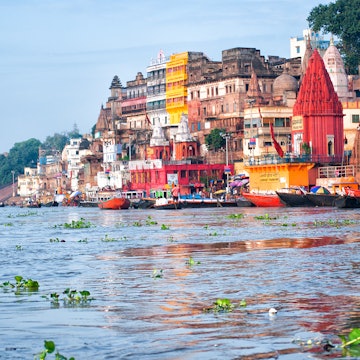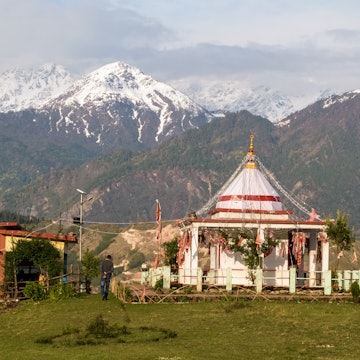

rock garden , neck chand
Don’t be alarmed if you find Delhi a bit overwhelming. The Indian capital can be unnerving, even for longstanding residents who love its multifarious charms. Despite Delhi’s mind-boggling heritage, vibey neighbourhoods, laissez faire lifestyle and general bonhomie, every so often almost everyone feels a little swamped by the vast crowds filling most urban spaces.
Fortunately, for all the maddening chaos, mindless traffic and soup-thick pollution, it’s easy to take a break. Here’s a list of quick day trips and overnight excursions that will help you return refreshed, rejuvenated, and ready to love Delhi all over again.

Le Corbusier’s Chandigarh
Leafy boulevards, flower-filled roundabouts, and gardens galore welcome you to India’s tidiest urban space. The planned city of Chandigarh was designed by modernist architect Le Corbusier. The Capital Complex is his most iconic work, home today to Haryana’s Legislative Assembly, Secretariat, High Court and the famous Open Hand Monument, the official symbol of the city. The complex is preserved as a UNESCO World Heritage Site, and the Le Corbusier Centre in sector 19 will provide you with entry permits.
Down the road, hugging the foothills at Chandigarh’s northern extremity is Sukhna Lake, a popular spot for promenading, keeping fit and romantic activity. Sandwiched between the two is the remarkable Nek Chand Rock Garden, a surreal garden of sculptures and pavilions fashioned in secret by a creative municipal worker using rubbish discarded from the construction of Chandigarh. Give yourself a good two hours to explore this fantastical space.
Seek out the pedestrian-only plaza in sector 17 for a spot of retail therapy; it’s also one of the best places in the city to grab a quick bite. Then take a wander amidst the blooms at the Rose Garden in sector 16 before heading back to the train station.
Practicalities Take the early morning Shatabdi Express from New Delhi Railway Station to get to Chandigarh in just over three hours. Once here, hire a local cab, autorickshaw, or radio taxi for the day to ferry you around the city, before taking the later of the two evening Shatabdi trains back to Delhi.

Princely Patiala
Famed as the birthplace of a rather large alcohol measure in colonial times, this erstwhile seat of flamboyant yet munificent maharajas still charms with fading vestiges of its princely past. At the heart of Patiala’s old city, a crumbling old fort, the Qila Mubarak, sits elegantly forlorn, its chandeliers, silver chariots and gilded frescoes quietly fading. A warren of busy streets fans out from here, and you can spend hours wandering bazaars dedicated to bridal paraphernalia, pickles, kitchen utensils and juttis (traditional leather sandals). Patiala is also a great place to go shopping for phulkari-work – fine floral embroidery, a celebrated handicraft from these parts.
With its many re-purposed palaces, havelis (merchants’ houses) and mansions, Patiala makes for an enriching architectural outing – look out for Mughal and Rajput features as you wander the backstreets. The chances of you stumbling across a film crew shooting in and around these structural marvels is pretty high!
Practicalities Buses to Patiala run through the day from the ISBT at Kashmere Gate, taking about six hours, so an overnight stop is needed. Hotels to suit all budgets are available; set in a maharaja’s summer palace, Neemrana's Baradari Palace drips with heritage. Ask the front desk to arrange local transport or flag down an autorickshaw.

Charming Chambal Sanctuary
Though at one time home of infamous dacoits (bandits), the Chambal valley is today better known for its peaceful natural scenery and healthy population of crocodiles – both marsh muggers and long-nosed gharials – and the odd Gangetic dolphin. In winter, the sandy banks of the Chambal River play host to abundant indigenous avian life as well as countless migratory birds. You’ll spot any number of winged visitors on an hour-long boat ride, which is also the best vantage point for viewing the raw beauty of the acacia-wrapped ravines.
The Chambal Wildlife Sanctuary is also home to braces of agile blackbucks that make great photographic subjects; the deer are well used to human presence, and shutterbugs can get pretty close to capture their graceful and magnificent horns. Also making their presence known are flocks of elegant Sarus cranes, the world’s tallest flying bird.
From Chambal, you can take a short drive to the temple town of Bateshwar, home to India’s second largest cattle fair, which fills the streets with livestock in October or November. The sleepy riverside town also hosts a row of ancient shrines honouring Shiva on one bank of the sacred Yamuna River, where devotees and sadhus congregate.
Practicalities The Bhopal Shatabdi train from New Delhi Railway Station ferries you to Agra in just over two hours. Pre-arranged taxis from there make the run to the Chambal Sanctuary in about two and a half hours. You can choose between an overnight stay at the Chambal Safari Lodge or return to countless, budget-friendly hotels in Agra. To return, hop back onto the Bhopal Shatabdi the following evening.

Panipat Past and Present
This busy industrial city 90km north of Delhi has a rich history. This is one of five cities believed to be founded by the Pandavas, heroes of the Hindu epic, the Mahabharata, and Panipat was also the setting for crucial clashes in the 16th century, including the battle that ushered in Mughal rule, when Babur defeated the last Afghan sultan, Ibrahim Lodi, in 1526.
Amongst other Islamic relics, you’ll find the unfortunate sultan buried in a forlorn plinth-topped grave located next to the municipal offices. More vibrant culture can be experienced in the town’s temples, and in the graceful compounds of the Kabuli Bagh Mosque and the tomb of Bu-Ali Shah Qalander. The Panipat Museum in the NFL Area will reveal more of the town’s fierce past; admission is free.
Though you are likely to be blitzed by endless highway advertisements for local pickles (the Pachranga brand is particularly respected), Panipat is better known for textile manufacturing today and is feted as India’s cast-off capital, with discards by international brands recycled and repurposed into ‘shoddy’ – a coarse yarn used for blankets.
Practicalities Hop onto a local bus plying frequently between Delhi’s ISBT at Kashmere Gate and Panipat Bus Stand. It takes about two hours to cover the 90km distance. To explore local sights on arrival, rent a bicycle or charter an autorickshaw. With the short distances involved, you should be able to return to Delhi on an afternoon bus.

Cultural curiosities in Meerut & Sardhana
A busy industrial hub 80km northeast of Delhi, Meerut is where the famous 1857 revolt against the British East India Company started. Although the colonials are long gone, the faint footprint of the British can still be seen. You can visit the St John’s Church and the adjoining cemetery in the cantonment where the uprising began; built between 1819 and 1821, this is believed to be the oldest church in north India.
Afterwards, head on to the Basilica of Our Lady of Graces in Sardhana, 19km northwest of Meerut. This handsome early 19th-century church was built by Begum Samru, a Muslim nautch (professional court dancing girl) who married a French mercenary, converted, and inherited the nobleman’s fiefdom upon his death. Celebrated as India’s only Catholic ruler, Begum Samru is buried in a handsome marble tomb inside the church.
Practicalities The best way to explore both Meerut and Sardhana in a single day is to hire a taxi in Delhi for a day trip. With few transportation options to Sardhana, having a vehicle handy will save time and allow for pit stops for meals and photo-ops on the three hour journey each way.
Make the most of your travel with sightseeing tours and activities from our trusted partners.
















